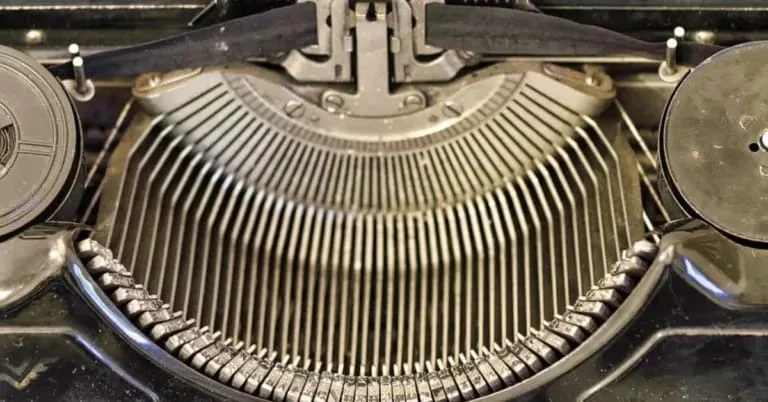Since my mother was a journalist, I can recall this one. A typewriter. They were magnificent. I can still picture myself on my mother’s lap, watching her type. Ink and paper had a lovely aroma. They had so many models, and each one was such a work of art.

“Typewriters: A Nostalgic Journey into the History and Legacy of Writing Machines”.
The simple typewriter serves as a nostalgic reminder of a bygone era of communication in a time when touchscreens and digital devices predominate. Typewriters, once vital tools for professionals like writers, journalists, and professionals, have left a lasting impression on history. We’ll travel back in time in this article to discover the fascinating world of typewriters, their development, significance, and enduring legacy.
The development of typewriters is as follows.
Even though the idea of a mechanical writing device dates back to the 18th century, it wasn’t until the 19th century that useful typewriters started to appear. The Sholes and Glidden typewriter, also known as the Remington No. 1, was the first commercially successful typewriter. 1, which debuted in 1873. The mechanization of writing advanced significantly as a result of this invention.
The “QWERTY” keyboard layout, which is still used on contemporary computers and devices, was first seen on early typewriters. Using frequently used letter combinations can cause mechanical typewriters to jam, so this layout was created to avoid that.
The effect on communication and society is.
A significant change in communication and society resulted from the invention of typewriters.
This is how:.
Increased Efficiency: The speed at which writing and document production were done was revolutionized by the introduction of typewriters. Professional typists could create documents more quickly than handwritten copies, enhancing productivity in workplaces.
Document Standardization: Because each character on a typewriter was produced with constant accuracy, typewriters brought a certain level of uniformity to documents. For official and legal documents, this was particularly crucial.
Journalism and publishing: The typewriter was essential to the development of the journalism sector. Newspapers became a major source of information due to the rapidity with which reporters and writers could produce copy.
Accessibility to Writing: Typewriters opened up writing to a wider range of people. More people were able to engage in business writing and correspondence as the price of typewriters dropped over time.
Archiving and preservation: Typewritten documents were more durable than handwritten manuscripts. Historical documents and literary works have been preserved thanks to this improved archival quality.
Legacy that Will Last:.
Although computers and other digital devices have largely replaced typewriters, their legacy still exists in a number of ways:.
Vintage typewriters are prized for their distinctive designs and historical significance, making them popular collector’s items and antiques.
Nostalgia and aesthetics: Typing on a typewriter brings back memories of simpler times, with its clacking sound and tactile experience. For inspiration, some writers still favor the physical feel of typewriters.
Art and Creativity: Typewriter text is incorporated into artwork by artists and designers, fusing retro appeal with modern creativity.
Typewriters have appeared in literature, movies, and other forms of art, serving as symbols of past times and a timeless quality.
Typewriters are sometimes provided as resources for focusing and igniting creativity at writing retreats and workshops.
A fascinating aspect of history is the typewriter, a mechanical marvel that revolutionized communication. Its development from crude prototypes to svelte, useful machines affected how we produce and consume written content.
Although typewriters were a thing of the past thanks to technology, their legacy lives on today, inspiring authors, artists, and enthusiasts alike. With their timeless connection to our literary past, typewriters serve as a constant reminder of the real relationship between the physical act of typing and the production of words on paper.

